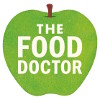

By Gemma Landau BSc (Hons) NT MBANT: Nutrition
Qualified Nutritional Therapist, The Food Doctor Clinic, Harley Street
Children are not simply younger adults when it comes to nutrition; they are growing and they are usually much more active. What they eat has an impact on them now and sets the path for their future.
Blood sugar balance
Keeping blood sugar balanced is essential for sustained energy and concentration. This applies to people of all ages, particularly school children during exams and when they are required to focus for long periods of time.
Protein is the key ingredient. Ensure your child has some protein with each meal and snack every 2-3 hours to provide him or her with ongoing energy. Try to provide wholegrain and brown carbohydrates as these release energy slower compared with white carbohydrates and therefore keep blood glucose from rising too high or falling too low. Examples include: brown bread, brown rice, wholegrain pasta.
Omega fats
Extensive research has been carried out as to the benefits of these fats and oils. Omega-3 has been shown to improve cognitive performance. Ensuring your child has a diet balanced in omega fats is believed to enhance their overall cognitive performance.
Omega-3 is only found in some foods such as oily fish, nuts and seeds. Oily fish like salmon, tuna, mackerel and sardines are the most readily available sources of omega-3 from food. Try to ensure you child eats them roughly twice per week. Nuts and seeds, including almonds, flax seed and sunflower seeds contain omega fats, which make them useful as a snack alternative for everyone. Combining a small handful of nuts and seeds at snack time with a piece of fruit also ensures that protein is present.
Omega-3 vs omega-6 fats
It is essential that there is a balance between these two omega fats as they compete for absorption in the body. Omega-6 is readily available from foods such as butter and vegetable oils.
Snack Ideas for Kids
• Carrot sticks with hummus, guacamole or almond butter
• Rice cakes with seeds to ensure a bit of protein (watch out for the MSG in some brands)
• Home-made flapjacks with agave or honey instead of sugar (protein in the oats)
• Yoghurt and seeds
• Mixed nuts and seeds
• Fruit with a small handful of nuts or seeds
• Multi seeded wholemeal/rye bread with nut butter (almond is a good choice as it is high in omega-3) (peanuts are not classified as nuts, but still contain protein)
Gemma sees clients at The Food Doctor Clinic, 13 Harley Street, London W1G 9QG (020) 7792 6720
www.TheFoodDoctor.com
Leave a Comment